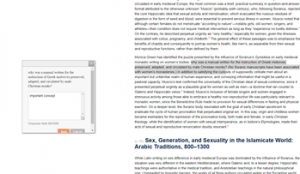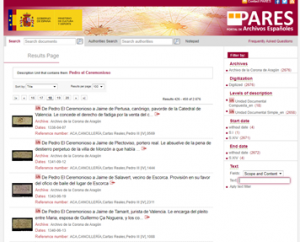In the next post as part of the Active Online Reading project, Anna Rich-Abad (staff profile here), Assistant Professor in Medieval History, University of Nottingham, offers her perspective on the challenges of reading (and searching online).
I miss the “good old times” when research was done on physical documents and books; visits to libraries and archives were places for interchange of ideas and socialization. But do not get me wrong, I am certainly grateful to have access to e-books and e-articles and to digital reproductions of primary sources that can be consulted from everywhere, particularly under Covid conditions.
More material than ever before has been posted online. Information comes to us every day from platforms as diverse as Twitter and Academia.edu, and we have access to institutional libraries, journal subscriptions and other resources from which we can read online or download books and articles. Nevertheless, even with all the advantages of access and immediacy that it offers, reading online has several interlinked problems: screen fatigue is one, another is the tendency to skim reading and the hoarding of large volumes of materials to read later (never!?). There are also problems related to critiquing and selecting materials.

Because I get tired when reading online, I skim read a lot, and I worry that I might miss something important, so I tend to download PDFs and bookmarks for reviewing later, hopefully. The result is that my desktop is full of pdfs – if I file them, I forget about them. Many online reading platforms have annotation systems that I am sure allow for a more efficient storage and general management of the materials that I read, but I am yet to master any of these. My old-fashioned approach to reading online is often cutting and pasting and annotating in my trusted word processor or OneNote.
An additional problem with online reading is the selection of materials. Ease of access has a lot to do with inhibiting (rather than diversifying) criteria of selection, particularly among students in the early stages of their degrees and especially those who are away from university and rely only on online resources, ignoring the works that have not – yet – been digitalised to write their essays.

Extending online reading to primary sources poses some peculiar problems too. It is possible to access a lot of material from archives abroad. Reading medieval documents online is relatively easy as the digitised collections – at least the ones I use – are usually of great quality. However, the location of the documents is as problematic (or more so) as in the physical archive and often the joy of finding the specific document and reading with all the clarity that digital technology offers is outweighed by search processes that can only be described as painful. Specialists in palaeography are working hard on handwriting recognition tools and exploring word search possibilities for medieval documents, so it is possible that medieval and early modern sources may be easier to access in the future.
It appears that while reading online is more immediate and can be done from everywhere, it is not necessarily easier than reading on paper. It requires adapting to new criteria of selection when filtering materials and it requires readers to learn online navigation and annotation systems. It is a constant learning curve to make our on-screen time more efficient and for some of us this imposes a hard physical demand.